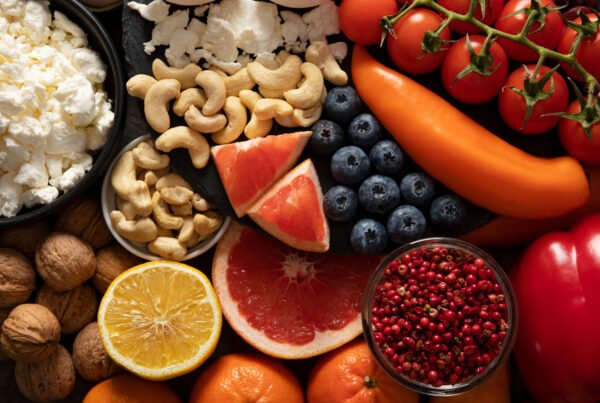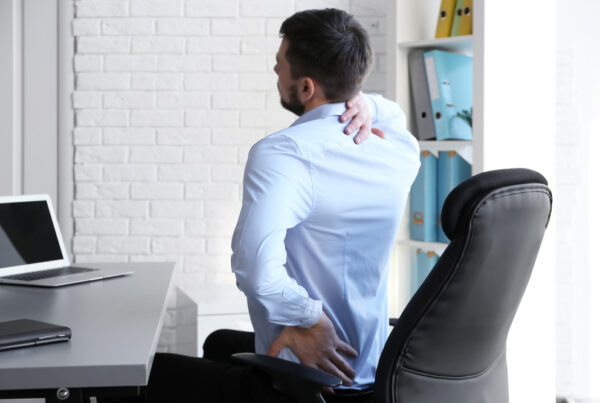You know what’s frustrating? Watching your hair fall out in clumps every time you shower. I’ve been there, and honestly, it’s that sinking feeling when you realize your drain is clogged again – not with leaves or random debris, but with your own hair.
Well, here’s the thing about hair fall shampoos – they’re not just fancy marketing gimmicks (though some definitely are). The good ones are actually formulated with ingredients that can help target hair fall at its source. I’m talking about stuff like biotin, keratin, and plant proteins that work to boost fiber production, re-anchor those precious hair strands, and strengthen the ends for what should be denser, healthier hair.
Why You Actually Need a Specialized Shampoo for Hair Fall Control
Look, I used to think a shampoo was just a shampoo. Boy, was I wrong.
A proper hair fall shampoo isn’t just another cleanser you grab off the shelf – it’s more like a targeted treatment that’s designed to tackle the root causes of hair loss. And trust me, after trying probably a dozen different bottles over the years, I can tell you there’s a real difference.
These specialized shampoos come packed with powerful ingredients like biotin, keratin, plant proteins, and natural extracts that actually do something useful:
- They strengthen your hair from the roots, which means less breakage and thinning (finally!)
- They nourish and energize your scalp – think of it as creating the perfect environment for healthy hair growth
- They cleanse away all that dirt, oil, and product buildup without completely stripping your natural oils (because nobody wants that squeaky-clean feeling that leaves your scalp feeling like the Sahara)
What’s interesting is how many leading brands are now using ingredients like soy protein, apple extract, lemon, onion (yes, onion!), and plant keratin. These aren’t just random additions—they actually work to reinforce hair fibers, stimulate sleepy follicles, and protect against environmental stress.
I’ve noticed that with regular use – and I mean consistent, not just when you remember – these shampoos can lead to visibly thicker, denser hair. Though let me be honest here: it takes time. Like, months, not days.
Understanding Hair Loss: The Science Behind the Problem (It’s More Complex Than You Think)
Here’s something that might surprise you – hair loss affects over 50% of people over age 50. That’s… a lot of people dealing with this same frustration.
The most common culprit? Androgenetic alopecia. Sounds fancy, but it’s basically pattern baldness that affects both men and women. But that’s not the only villain in this story:
- Androgenetic Alopecia: This one’s caused by sensitivity to DHT (dihydrotestosterone). It’s genetic, which means you can probably thank your parents for this particular gift.
- Telogen Effluvium: This is temporary hair loss that happens when you’re stressed, sick, or going through hormonal changes. I experienced this after a fierce work period – suddenly, my hair was everywhere except on my head.
- Scalp Conditions: Things like seborrheic dermatitis, fungal infections, or just general inflammation can really mess with hair growth.
- Nutritional Deficiencies: Not getting enough iron, biotin, or protein? Your hair will be the first to complain.
The thing is, effective hair fall shampoos don’t just clean your hair – they actually target these underlying causes. That’s what makes them worth the extra few dollars.

BARE ANATOMY Hair-Fall Shampoo
BARE ANATOMY Anti Hair-Fall Shampoo with Peptides| Sulphate & Paraben Free (250 ml)

Pilgrim Anti Hair-Fall Shampoo
Pilgrim Hair-Fall Control Shampoo for Thick Hair (200 ml)

The Best BARE ANATOMY Shampoo
BARE ANATOMY Anti-Dandruff Shampoo – Strengthens Hair with Salicylic Acid & Biotin (250 ml)
How to Use Anti-Hair Fall Shampoos Effectively (Because Technique Actually Matters)
Okay, this might sound obvious, but hear me out – there’s actually a right way to use these shampoos. I learned this the hard way after months of basically wasting product.
Application Method
- Pre-wash preparation: Gently brush your hair first. This removes tangles and distributes those natural oils. Trust me on this one.
- Water temperature: Use lukewarm water. I know, I know – hot showers feel amazing, but they’ll strip your natural oils and irritate your scalp. Not what we want here.
- Application technique: Here’s where most people mess up – focus the shampoo on your scalp, not the lengths of your hair. Massage gently with your fingertips (not your nails!) for about 2-3 minutes. This isn’t just cleaning; you’re stimulating blood flow.
- Contact time: This is crucial – let those active ingredients actually work by leaving the shampoo on for 3-5 minutes before rinsing. I usually use this time to… well, contemplate life choices or practice my shower singing.
- Thorough rinsing: Make sure you get all the product out. Leftover shampoo can cause buildup, which defeats the whole purpose.
Frequency and Timeline
Start with using these shampoos 2-3 times per week. You might need to adjust based on how your scalp responds – some people need more, others less.
And here’s the reality check: results typically become visible after 8-12 weeks of consistent use. I know, I know – we live in an instant gratification world, but hair growth follows its own timeline, which aligns with the natural hair growth cycle.
What to Actually Expect
Week 1-4: You’ll probably notice reduced hair shedding during washing. This was the first sign for me that something was working.
Week 4-8: Your scalp should feel healthier, less irritated. The itching that I didn’t even realize I had started to disappear.
Week 8-16: This is when you might start seeing new hair growth and increased density. Might. Don’t panic if it takes longer.
The Power of Hair Fall Oil in Your Routine
Actually, let me share something that made a huge difference for me – combining your hair fall shampoo with a good hair fall oil. I was skeptical at first (more products = more money), but massaging oil into your scalp before washing actually:
- Boosts blood circulation to the follicles, which encourages growth
- Deeply conditions and hydrates both your scalp and hair, reducing that awful dryness and breakage
- Prepares your hair for cleansing, so the shampoo can work more effectively
It’s like… prep work. You wouldn’t paint a wall without priming it first, right?
Top Categories of Hair Fall Shampoos to Consider
When I was drowning in options (seriously, the hair care aisle is overwhelming), I learned to look for specific ingredient categories:
DHT-Blocking Shampoos
Look for shampoos with ketoconazole (1-2%), saw palmetto, or caffeine. These help block DHT, that hormone I mentioned earlier that’s linked to pattern hair loss.
Here’s something cool – ketoconazole has actually been clinically shown to be as effective as 2% minoxidil for hair regrowth. That’s… pretty impressive for a shampoo ingredient.
Peptide-Enhanced Formulas
These sound super scientific, but copper peptides and biomimetic peptides like Acetyl Tetrapeptide-3 help stimulate hair follicles and improve scalp circulation. You’ll find these in the pricier lines, but the clinical studies are promising.
Natural Extract-Based Shampoos
If you prefer gentler alternatives, look for rosemary oil (which has been clinically proven to match minoxidil’s effectiveness – who knew?), pumpkin seed oil, and ginseng extract. These have scientific backing without the harsh chemicals.
Scalp Health-Focused Options
Sometimes the problem isn’t just hair loss – it’s an unhealthy scalp. Shampoos with niacinamide, zinc pyrithione, or tea tree oil address underlying conditions like inflammation or fungal issues that can contribute to hair loss.
Clinically-Proven Ingredients to Look For
Okay, let me break down the ingredients that actually have science behind them, because there’s a lot of marketing fluff out there:
Tier 1: Strongest Evidence
- Ketoconazole (1-2%): FDA-approved antifungal that blocks DHT production. This is the real deal.
- Rosemary Oil: A 2015 study showed it’s equally effective to 2% minoxidil. I was shocked when I first read this.
- Caffeine: It actually penetrates hair follicles and counteracts DHT effects. Your morning coffee for your scalp, basically.
Tier 2: Promising Research
- Adenosine: Extends the hair growth phase and increases thickness
- Copper Peptides: Stimulate follicle growth and improve circulation
- Procyanidin B-2: This apple extract promotes hair growth (apples aren’t just for keeping doctors away, apparently)
Supporting Ingredients
- Biotin and B-vitamins: Support hair structure and strength
- Niacinamide: Improves scalp circulation and reduces inflammation
- Zinc Pyrithione: Addresses scalp conditions that impair growth
Setting Realistic Expectations (The Hard Truth)
Look, I need to be honest with you here. Anti-hair fall shampoos can be effective, but they’re not miracle workers. I learned this after expecting dramatic results in the first month.
What Shampoos Can Actually Do:
- Reduce hair breakage and shedding (this was huge for me)
- Improve scalp health and circulation
- Support existing hair growth cycles
- Prevent further hair loss when used consistently
What Shampoos Cannot Do:
- Reverse advanced pattern baldness (sorry, but it’s true)
- Work overnight or show results in days (despite what some ads claim)
- Replace medical treatments for severe hair loss
- Regrow hair in completely bald areas
When to see a dermatologist: If you’re losing more than 100 hairs per day (count them if you’re curious – it’s eye-opening), notice sudden bald patches, or don’t see improvement after 4 months of consistent use, it’s time to consult a professional.
The Best Hair Fall Shampoos (My Top Picks)
1. BARE ANATOMY Hair-Fall Shampoo with Peptides| Sulphate & Paraben Free (250 ml)

This one claims 5x hair fall control compared to regular shampoos. The Adeno Grow technology is interesting – it’s supposed to influence hair growth cells and add nutrients to strengthen strands. What I liked about this one is that it doesn’t over-condition, so your hair doesn’t feel heavy or weighed down.
2. Pilgrim Hair-Fall Control Shampoo for Thick Hair (200 ml)

The Redensyl and Anagain ingredients are clinically proven to increase hair thickness and strength. Plus, Korean Black Rice? That’s a new one for me, but it’s supposed to strengthen hair and promote growth while adding shine. The Korean beauty influence is real.
3. BARE ANATOMY Anti-Dandruff Shampoo – Strengthens Hair with Salicylic Acid & Biotin (250 ml)

If you’re dealing with both dandruff and hair fall (lucky you), this targets both issues. The salicylic acid combination with Piroctone Olamine goes after dandruff-causing fungus while biotin strengthens hair strands. Two birds, one stone.
4. Mamaearth Onion Shampoo for Growth & Hair Fall Control with Onion & Plant Keratin (600 ml)

Yes, onion in shampoo. I was skeptical too, but onion extract is actually proven to help with hair growth. The plant keratin and vitamin E are nice additions. Plus, you get 600ml, which is great value.
5. The Plant Fix Plix Rosemary Advanced Anti Hair Fall Shampoo for Reducing Hair Loss & Breakage (200 ml)

You know what? Hair loss is frustrating, but it’s not the end of the world. With the right shampoo, realistic expectations, and some patience, you can definitely see improvement. Just don’t expect miracles overnight – good things take time, including healthier hair.























